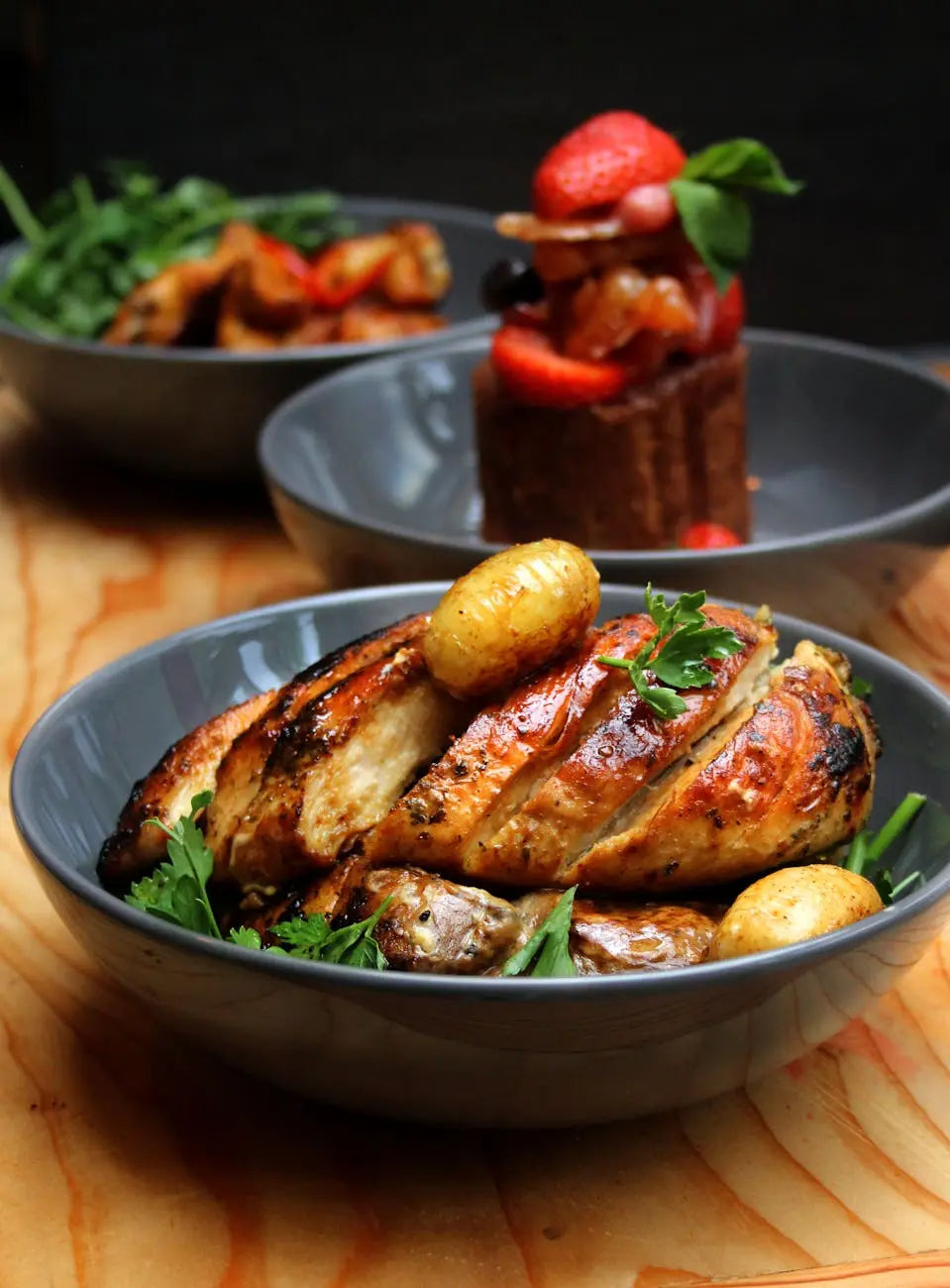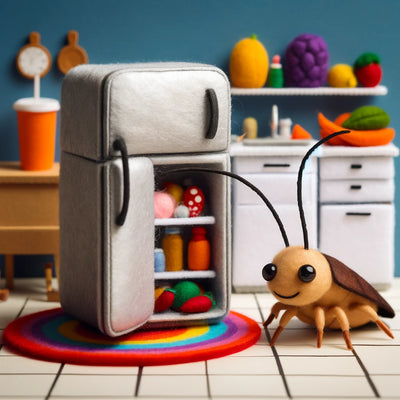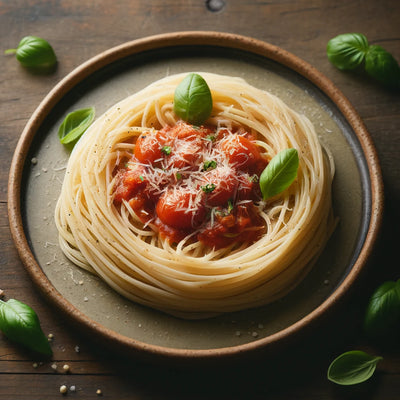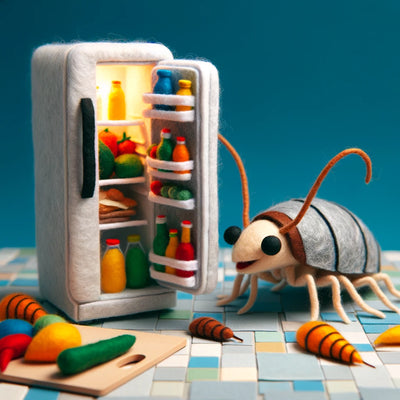Storing Chicken in the Fridge: Maximizing Freshness
Importance of Proper Chicken Storage
Proper storage of chicken in your refrigerator is crucial for maintaining its freshness and preventing the growth of harmful bacteria. Safe handling and storage can significantly reduce the risk of foodborne illnesses. Chicken, being highly perishable, requires careful attention to ensure that it remains safe to eat and retains its quality. By understanding and implementing correct storage practices, you can protect yourself and your family while enjoying the nutritional benefits of this versatile protein.
Understanding the Ideal Timeframe
The timeframe for keeping chicken in the fridge is determined by whether it's raw or cooked. For raw chicken, the USDA recommends storing it in the refrigerator for no more than 1-2 days. Cooked chicken, on the other hand, can last in the fridge for about 3-4 days. The following table outlines the ideal storage timeframes for different types of chicken:
| Chicken Type | Storage Timeframe (Days) |
|---|---|
| Raw Chicken | 1 - 2 |
| Cooked Chicken | 3 - 4 |
| Ground Chicken | 1 - 2 |
| Chicken Liver/Other Organs | 1 - 2 |
These timeframes assume that the refrigerator temperature is set below 40°F (4°C), which is the standard for inhibiting bacterial growth. For more comprehensive details on how to maintain the freshness of other perishable items, such as eggs and carrots, check out our articles on preserving freshness unveiling the timeframe for eggs in the fridge and keep your carrots crisp fridge storage duration unveiled.
To ensure that your chicken stays within these ideal timeframes, it's also important to have a reliable and well-functioning refrigerator. For options on upgrading your kitchen appliance, you might be interested in exploring the best 20 cu ft refrigerator with freezer on top or perhaps a stainless steel french door refrigerator to add style and efficiency to your food preservation needs.
Fresh Chicken Storage Guidelines
Proper storage of chicken in the fridge is crucial for maximizing freshness and ensuring food safety. Whether you're storing raw or cooked chicken, understanding the ideal timeframe and conditions can help prevent foodborne illness and preserve the quality of your poultry.
Raw Chicken Storage
Storing raw chicken in the refrigerator requires attention to time and temperature to maintain its freshness. Ideally, raw chicken should be stored at temperatures below 40°F (4°C) to slow down bacterial growth. The USDA recommends that raw chicken be stored in the refrigerator for no more than 1 to 2 days. If you need to store it for a longer period, consider freezing the chicken.
When placing raw chicken in the fridge, make sure to:
- Store it in its original packaging or airtight containers.
- Place it on the lowest shelf to prevent cross-contamination.
- Keep it separate from ready-to-eat foods and produce.
Here's a table that outlines the recommended storage time for raw chicken in the fridge:
| Type of Chicken | Storage Time in Fridge |
|---|---|
| Whole Raw Chicken | 1 to 2 days |
| Raw Chicken Parts (breasts, thighs, wings) | 1 to 2 days |
| Ground Chicken | 1 to 2 days |
For more information on safe poultry handling and storage, check out our guide on extending the freshness of chicken in the fridge.
Cooked Chicken Storage
Cooked chicken has a slightly longer shelf life in the fridge compared to its raw counterpart. Once cooked, chicken should be refrigerated within two hours of cooking to prevent bacterial growth. The USDA suggests that cooked chicken can be stored in the refrigerator for 3 to 4 days.
To ensure the best quality and safety for your cooked chicken, follow these tips:
- Allow the chicken to cool before refrigerating to prevent increasing the fridge temperature.
- Store it in shallow, airtight containers or wrap it tightly with aluminum foil or plastic wrap.
- Label containers with the date to keep track of storage duration.
Refer to this table for a quick reference on storing cooked chicken:
| Condition of Chicken | Storage Time in Fridge |
|---|---|
| Cooked Chicken (leftovers) | 3 to 4 days |
| Chicken Broth or Gravy | 1 to 2 days |
| Cooked Chicken Dishes (casseroles, salads, etc.) | 3 to 4 days |
If you've enjoyed a delicious meal but can't finish it all, learn the proper way to store leftovers with our article on from pot to fridge: unveiling the lifespan of cooked chicken in the fridge.
By adhering to these guidelines, you can enjoy your chicken at its best quality and minimize the risk of foodborne illnesses. Whether you're a seasoned chef or a home cook, understanding the importance of refrigeration can lead to safer and more enjoyable meals.
Factors Affecting Chicken Freshness
When it comes to storing chicken in your refrigerator, several factors can influence how long it stays fresh and safe to eat. Two primary factors are temperature control and how you package the chicken before refrigeration.
Temperature Control
Maintaining the right temperature inside your fridge is critical for maximizing the freshness of chicken. The USDA recommends keeping your refrigerator temperature at or below 40°F (4°C) to slow down bacterial growth and extend the shelf life of perishable foods like chicken.
Here's a table that outlines the ideal temperature range for your refrigerator to ensure optimal freshness for chicken:
| Refrigerator Section | Ideal Temperature Range |
|---|---|
| Main Compartment | 32°F to 40°F (0°C to 4°C) |
| Crisper Drawers (for vegetables) | 32°F to 40°F (0°C to 4°C) |
| Door Shelves (less cold) | Not recommended for perishable meats |
For more tips on keeping your fridge at the ideal temperature, explore our article on the perfect chill: how cold should a fridge be for optimal freshness.
Packaging Considerations
The way you package chicken can also affect its freshness and lifespan in the fridge. Proper packaging helps protect the chicken from air and bacterial contamination, which can accelerate spoilage. Ideally, you should store chicken in its original packaging if it's unopened and vacuum-sealed. If you've opened the package or if the chicken is not in a vacuum-sealed pack, you should transfer it to an airtight container or wrap it tightly with plastic wrap or aluminum foil.
Here are some packaging tips for optimal chicken storage:
- Airtight Containers: Place the chicken in a clean, airtight container to prevent air exposure.
- Plastic Wrap/Aluminum Foil: If using wrap, ensure it's tightly sealed around the chicken.
- Refrigerator Placement: Store packaged chicken on the bottom shelf to prevent cross-contamination with other foods.
For a comprehensive guide to storing chicken and other poultry products, take a look at extend the freshness: the ultimate guide to storing chicken in the fridge.
By paying attention to temperature control and packaging considerations, you can ensure that your chicken remains as fresh as possible until you're ready to cook it. Remember to also follow safe handling practices, such as washing your hands before and after handling raw chicken, to minimize the risk of foodborne illness.
Checking Chicken Freshness
Ensuring the freshness of chicken is vital for both taste and safety. It's important to recognize the signs of spoilage and understand how long chicken can remain in the fridge before it should be cooked or discarded.
Signs of Spoiled Chicken
You can determine if your chicken has gone bad through a few sensory indicators:
- Odor: Fresh chicken has a mild smell or none at all. If you detect any sour or ammonia-like odors, it's a clear sign that the chicken is no longer safe to consume.
- Color: Look for changes in color. While fresh chicken is usually a pale pink, spoiled chicken may appear grayish or have yellow spots.
- Texture: Fresh chicken should have a firm texture. If it feels slimy or sticky even after washing, this is an indication of bacterial growth.
- Expiration Date: Always check the 'sell-by' or 'use-by' date on the packaging. If the current date is beyond this, it's best to avoid using the chicken.
How Long Can You Keep Chicken
The duration for which you can keep chicken in the fridge depends on whether it's raw or cooked. Here's a quick reference table to guide you:
| Chicken Type | Fridge Lifespan |
|---|---|
| Raw Chicken (whole) | 1-2 days |
| Raw Chicken Parts | 2-3 days |
| Ground Chicken | 1-2 days |
| Cooked Chicken | 3-4 days |
To extend the freshness of chicken, proper storage techniques should be employed. For instance, keeping chicken in its original packaging or in airtight containers can help prevent exposure to air, which accelerates spoilage. Additional details on maintaining chicken freshness can be found in our guide: extend the freshness the ultimate guide to storing chicken in the fridge.
Should you find that you won't be able to cook the chicken within these timeframes, consider freezing it. Chicken stored in the freezer can last for much longer periods, with whole chickens remaining fresh for up to a year, and chicken parts for about 9 months. Always remember to thaw chicken safely, and when ready to cook, ensure it reaches the correct internal temperature to kill any bacteria present.
Extending Chicken Freshness
The key to maximizing the shelf life of chicken in the refrigerator is to ensure it is stored correctly. By employing effective sealing techniques and utilizing the freezer, you can extend the freshness of your chicken significantly.
Properly Sealing Chicken
To maintain the quality and freshness of chicken in the fridge, it is essential to store it in an airtight container or tightly sealed plastic wrap or aluminum foil. Proper sealing prevents air exposure, which can lead to contamination and spoilage. If you have a vacuum sealer, this can be an excellent tool for removing air from the packaging and sealing the chicken effectively.
When sealing chicken, make sure to:
- Pat the chicken dry with paper towels before sealing to remove excess moisture.
- Label the package with the date of storage to keep track of how long the chicken has been refrigerated.
- Store sealed chicken in the coldest part of the refrigerator, usually at the back, away from the door.
Here is a simple table to help you remember the guidelines for refrigerating raw and cooked chicken:
| Chicken Type | Refrigeration Time (at or below 40°F) |
|---|---|
| Raw Chicken Pieces | 1-2 days |
| Whole Raw Chicken | 1-2 days |
| Ground Chicken | 1-2 days |
| Cooked Chicken | 3-4 days |
For more detailed information on chicken storage and signs of spoilage, refer to our comprehensive guide on extending the freshness of chicken in the fridge.
Utilizing the Freezer
Freezing is an excellent way to preserve chicken for extended periods while maintaining its quality. When freezing chicken, whether raw or cooked, wrap it tightly in freezer-safe materials such as freezer bags or heavy-duty foil. Make sure to press out as much air as possible before sealing to prevent freezer burn.
Here are some tips for freezing chicken:
- Divide chicken into portion sizes you'll likely use for cooking to make thawing easier.
- Label the package with the date of freezing and the type of chicken to avoid confusion later.
- Remember that frozen chicken should be thawed safely in the refrigerator or by using cold water or microwave thawing methods.
The following table offers a quick reference for the freezer storage times for different types of chicken:
| Chicken Type | Freezer Time (0°F or lower) |
|---|---|
| Raw Chicken Pieces | Up to 9 months |
| Whole Raw Chicken | Up to 1 year |
| Ground Chicken | Up to 4 months |
| Cooked Chicken | 2-6 months |
By properly sealing and freezing your chicken, you can extend its freshness and enjoy it at a later date. Remember to follow safe handling practices when thawing and preparing chicken to ensure food safety. If you're interested in learning more about preserving other types of food, check out our article on preserving the freshness of eggs in the fridge.
Safe Handling Practices
When it comes to handling chicken, safety is paramount. Improper practices can result in foodborne illnesses. Therefore, understanding how to thaw and handle chicken safely is crucial for your health and for maximizing freshness.
Thawing Chicken Safely
Thawing chicken must be done with care to prevent bacterial growth. Never thaw chicken at room temperature, as this can create a breeding ground for bacteria. Instead, consider these safer alternatives:
- Refrigerator Thawing: Place the chicken in the fridge, keeping it in its original packaging or in a leak-proof container. This method is slow but ensures the chicken remains at a safe, consistent temperature.
- Cold Water Thawing: If you need to thaw chicken more quickly, immerse it in cold water in a leak-proof bag, changing the water every 30 minutes to maintain a cold environment.
- Microwave Thawing: Use the microwave's defrost setting for the quickest thawing. Cook the chicken immediately after thawing because some areas may become warm and begin to cook during microwaving.
It's important to plan ahead for thawing, especially if using the refrigerator method, which can take a full day for larger cuts of chicken. For detailed guidance on thawing times, you may refer to our article on extending the freshness the ultimate guide to storing chicken in the fridge.
Avoiding Cross-Contamination
Cross-contamination can occur when bacteria from raw chicken transfer to other foods, surfaces, or utensils. To avoid this:
- Use separate cutting boards: Have one for raw chicken and another for ready-to-eat foods.
- Clean surfaces and utensils: After handling raw chicken, thoroughly wash cutting boards, countertops, and utensils with hot soapy water.
- Wash your hands: Before and after handling raw chicken, wash your hands with soap and water for at least 20 seconds.
- Store chicken correctly: In the refrigerator, place raw chicken on the lowest shelf to prevent its juices from dripping onto other foods.
By following these safe handling practices, you can ensure that your chicken is not only fresh but also safe to eat. For more information on safe food handling and storage, check out our comprehensive guides on keeping your carrots crisp fridge storage duration unveiled and preserving freshness unveiling the timeframe for eggs in the fridge.
Cooking Chicken Safely
Ensuring chicken is prepared safely is imperative to the health and well-being of those who enjoy this versatile protein. Cooking chicken to the right temperature and following best practices for preparation can prevent foodborne illness and enhance the dining experience.
Cooking Chicken to the Right Temperature
The key to safely cooking chicken is making sure it reaches the internal temperature that is high enough to kill harmful bacteria. The USDA recommends cooking all poultry to a safe minimum internal temperature of 165°F.
| Chicken Part | Internal Temperature |
|---|---|
| Whole chicken | 165°F |
| Chicken breasts | 165°F |
| Chicken thighs | 165°F |
| Ground chicken | 165°F |
| Chicken wings | 165°F |
Using a meat thermometer is the most reliable way to ensure you've reached the appropriate temperature. Insert the thermometer into the thickest part of the chicken, avoiding bone, to get an accurate reading.
Best Practices for Chicken Preparation
Before even switching on your stove or oven, there are several best practices to follow when handling and preparing chicken:
- Always wash your hands with soap and water for at least 20 seconds before and after handling raw chicken.
- Use separate cutting boards and utensils for raw chicken to avoid cross-contamination.
- If you're marinating chicken, make sure to do so in the refrigerator, not on the counter.
- Never rinse chicken before cooking, as this can spread bacteria to other surfaces and foods.
- If you have leftovers, refrigerate them within two hours of cooking. Learn more about storing chicken in the fridge to maintain freshness.
- When defrosting frozen chicken, do so in the refrigerator, in a bowl of cold water, or in the microwave, never on the countertop.
- If you're using a sauce or marinade that was in contact with raw chicken, make sure to bring it to a boil before applying it to cooked chicken.
By following these safety guidelines, you can enjoy your chicken dishes with confidence, knowing you've taken the necessary steps to ensure your food is not only delicious but also prepared with care. Remember, the goal is to maximize the enjoyment of your meals while keeping safety at the forefront. For additional insights on safe food handling practices, especially in relation to refrigeration, explore articles such as maximizing freshness the ideal timeframe for chicken in the fridge and more on our website.
Get Your Upgrade or New Addition at Fridge.com
Whether you're searching for your perfect fridge, freezer, wine fridge, beer fridge, ice maker, or kegerator, we have what you need.
Shop the world's best brands at Fridge.com.
We also have tons of awesome articles about kitchen stuff and home news. Enhance your home, garage, backyard, patio, and office with the coolest essentials. With every necessary type of residential refrigerator or freezer in our collection, we've got you covered.
Elevate your game and shop now at Fridge.com!






